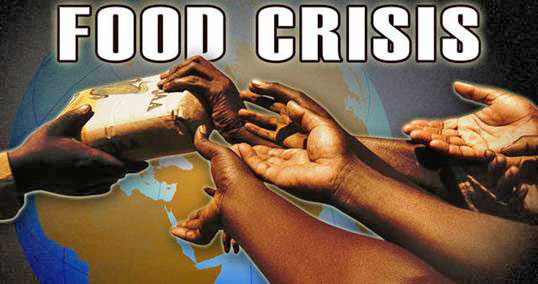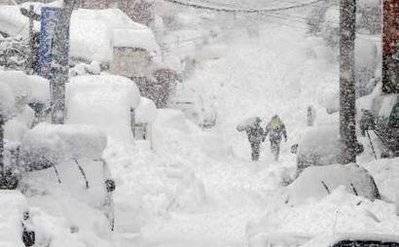|
World food inflation is smashing down on the world’s populations as prices rise precipitously in the face of increasing shortages and absurd monetary policies.
Prices are rising everywhere. It is not millions but billions of people who must tighten their belts because they have no choice but to eat less. Billions of people on our planet have no discretionary funds so they just cannot afford the increased prices.
They have to get by with less to eat. They have
no choice.
Imagine if China pulls out a $100 billion out of
its almost bottomless pockets and purchases grain to feed its billions? Why
wouldn’t they, after all, spend increasingly worthless paper on a mountain
of food?
There is nothing pretty about this quickly
evolving food catastrophe and with each week the story only becomes
gloomier.
The price of wheat is up 78.13 percent over Everywhere we turn we see dramatic climate events taking their toll on crops.
The cold weather experienced across much of the U.S. in early February made its way deep into Mexico and early reports estimate 80-100 percent crop losses, which are having an immediate impact on prices in U.S. grocery stores with more volatility to come.
As a result, prices on cucumbers, zucchini,
peppers, tomatoes and asparagus are set to explode in the states if in fact
there will be much of any of these vegetables available at all.
Storms in China’s far western Xinjiang flattened
or damaged
A severe drought has persisted in China’s northern territories for several months.
In Hebei province, the farmers haven’t seen any rain for five months. What is going on in China has global breadbasket implications.
So dire is the situation becoming that,
Wheat prices in Chicago jumped nearly two
percent on the 8th of February when the United Nations’ food
agency issued a rare alert that China’s crop was in trouble.
Record-breaking snowfall pounded South Korea’s east coast last Saturday when waist-deep snow stranded hundreds of motorists on highways and destroyed dozens of houses.
The roofs of dozens of houses, livestock sheds, vinyl greenhouses - even a bowling alley - collapsed under the weight of the snow. According to the Gangwon Regional Meteorological Administration, the two-day snowfall in the area reached,
Before Korea was hit it was Vietnam.
After enduring a freezing cold with
temperatures in mountainous areas dropping to -4°C,
northern Vietnam is
undergoing another fresh cold snap. The record low temperature this year had
frozen over 7,000 buffaloes and cows to death in more than 12 northern
mountainous provinces, said Deputy Head of the Livestock Breeding Department
Nguyen Thanh Son.
Global food production and supply are being
beaten down just as financial and monetary inflation also takes hold.
The Federal Reserve is printing money almost limitlessly now to extend the life of the United States government that is addicted to increasing debt and deficits.
They are injecting money (debt) at a furious pace producing stacks of fine quality paper with colored ink. This blatant act of self-preservation is striking hard at the lower and middle classes around the world who have to pay higher and higher prices for their food, which on international markets is denominated in dollars.
The day of reckoning for the dollar inches closer every day, as the Fed issues more Treasuries and floods the market with more devalued paper. Inevitably, this will cause prices to rise faster and faster as the value of U.S. currency drops further, pushing food prices up and up the side of a steep slope.
The world is paying for American debt in terms
of high food and energy prices.
So, the present tragedy is going to be compounded by too much money chasing the availability of food.
Even in America, if you are not financially
independent, the odds are good that someday you could be
waiting in line to
feed yourself and your family. It’s a mistake, even at this early point, to
take this delicious-looking bread for granted.
We are only at the very beginning of a crisis
that has “going to get much worse” written all over it.
|



